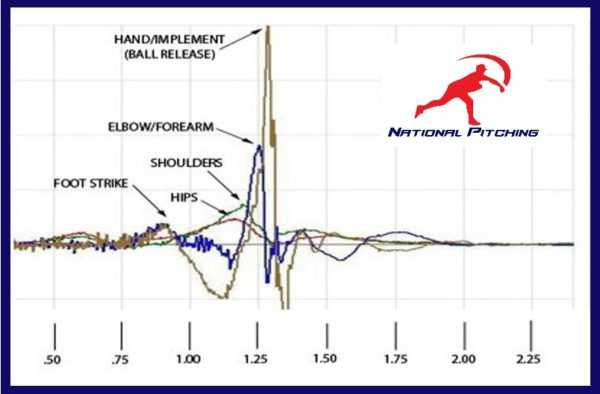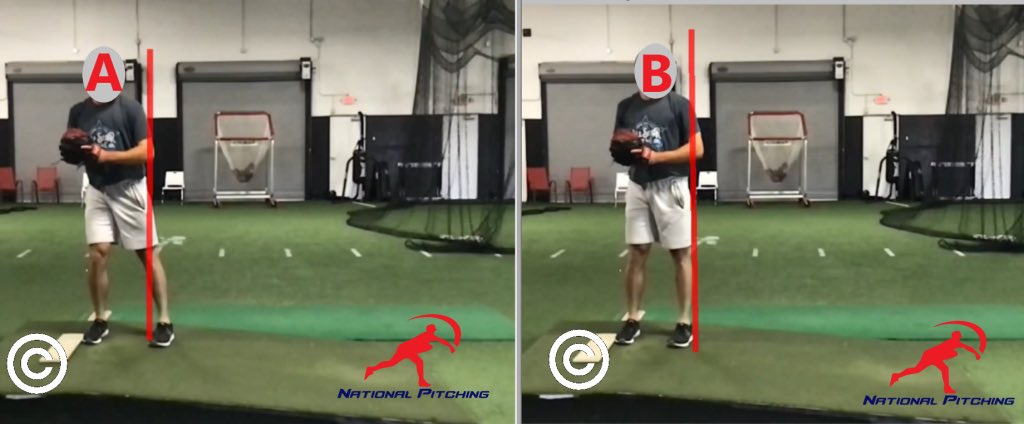Yes, it can! We recently posted a picture asking which starting position averaged 3 mph higher, A or B?
The correct answer is B. What’s the difference between A and B, and how does it effect velocity?
The Difference
Pitcher A is set up with a wider stance, shifting his weight to his back foot, before first movement. Pitcher B is set up with a stance equal to hip width, weight balanced equally on both feet, before first movement.
The Result
With a change in starting position, Pitcher B improved the efficiency of his kinematic sequence, and increased his velocity. The results were gathered in a one-day training session. The pitcher had no previous experience with National Pitching training. Specific improvements from changing starting position: faster timing into foot strike (same knee lift and stride distance), increase in hip and shoulder separation, and quicker timing to release from foot strike. Both timing to home and velocity improved.
The How and Why

There’s a difference between energy creation and energy efficiency. An athlete can be very good at creating energy, but if they have poor efficiencies, the output is not maximized. In addition, there’s a high correlation between injury rates and poor efficiencies.
Efficiency is evaluated with an athlete’s Kinematic Sequence (example Fig. 1). Each position/movement can affect the efficiency of the following positions/movements, positively or negatively. If the beginning of your sequence is incorrect, the following sequence of movements will be less efficient.
The Teach
This one’s easy… set up like Pitcher B! Set your feet the width of your hips, with your weight applied equally to both feet. Lift your knee and start forward movement immediately. Go fast! Your sequence will be more consistent and transfer power more efficiently. Better velocity and arm health!


